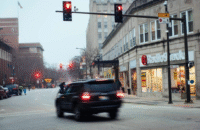Table of Contents:
Table of Contents
- Introduction to Urban Trees
- Environmental and Social Benefits
- Challenges in Urban Forestry
- Innovative Solutions
- Community Engagement and Future Directions
Introduction to Urban Trees
Trees are pivotal in urban environments, serving as more than just green cityscape decorations. They offer essential services, such as improving air quality and providing shade, which is increasingly vital as cities face rising temperatures. Urban greenery contributes significantly to enhancing the quality of city living by making environments more livable and aesthetically pleasing. For this reason, many cities enlist the aid of professionals like tree service Denver to maintain and expand their urban canopy.
The integration of trees into urban planning not only addresses environmental concerns but also bolsters the social fabric of communities. Trees have been known to reduce stress and promote community well-being, thus contributing to a healthier and more cohesive society. Understanding trees’ multifaceted roles in cities can help us manage and sustain urban landscapes effectively.
Environmental and Social Benefits
Urban trees offer a plethora of environmental and social benefits that are crucial for sustainable city living. Environmentally, trees act as natural air purifiers, filtering pollutants like carbon dioxide and releasing oxygen, which helps combat urban air pollution—a major health hazard in densely populated areas. Trees also significantly reduce urban heat by providing shade, lowering temperatures, and conserving energy through decreased air conditioning use.
From a social perspective, trees enhance urban aesthetics and create inviting spaces for recreation and relaxation. Green spaces encourage community interactions and cohesion, offering residents a natural retreat from the concrete jungle. Moreover, areas with abundant greenery often experience reduced crime rates and foster a stronger sense of community, further emphasizing the importance of trees in enhancing city life.
Challenges in Urban Forestry
Despite their myriad benefits, urban trees need help maintaining their survival and efficacy. Pollution, limited growing space, and infrastructure development can all hinder tree growth and health. The high density of city environments often leads to compacted soils and competition for resources, making it difficult for trees to thrive.
Urban trees are also vulnerable to damage from construction activities and severe weather events. As cities grow, managing these challenges requires strategic planning and specialized care. Urban forestry professionals must employ innovative techniques to mitigate these issues and ensure urban green spaces’ continued health and sustainability.
Innovative Solutions
To overcome urban trees’ challenges, cities are turning to innovative solutions incorporating technology and ecological practices. Smart irrigation systems and drone-assisted tree monitoring are changing how urban forestry is managed. These technologies enable efficient resource management and precise tree care, ensuring trees receive the attention they need to flourish.
Furthermore, urban planners are increasingly integrating green infrastructure into city design. Concepts like green roofs, vertical gardens, and tree-lined streets offer creative ways to bring nature into urban environments, enhancing their resilience and livability. By adopting such forward-thinking approaches, cities can create sustainable habitats that benefit both people and the planet.
Community Engagement and Future Directions
Community engagement is critical to the success of urban forestry initiatives. Local involvement in planting and maintaining urban trees fosters environmental stewardship and enhances public awareness of the benefits of green spaces. Through education programs and volunteer opportunities, communities can take an active role in shaping their urban landscapes.
Looking forward, the future of urban forestry lies in collaborative efforts that bring together governments, businesses, and residents to create resilient and biodiversity-rich cities. By valuing and investing in urban trees, we can nurture environments that support vibrant ecosystems and promote healthier, more sustainable urban living for generations to come.


















Leave a comment